
(a)
The graph of
(a)
Answer to Problem 44PQ
Plot for the induced emf in coil
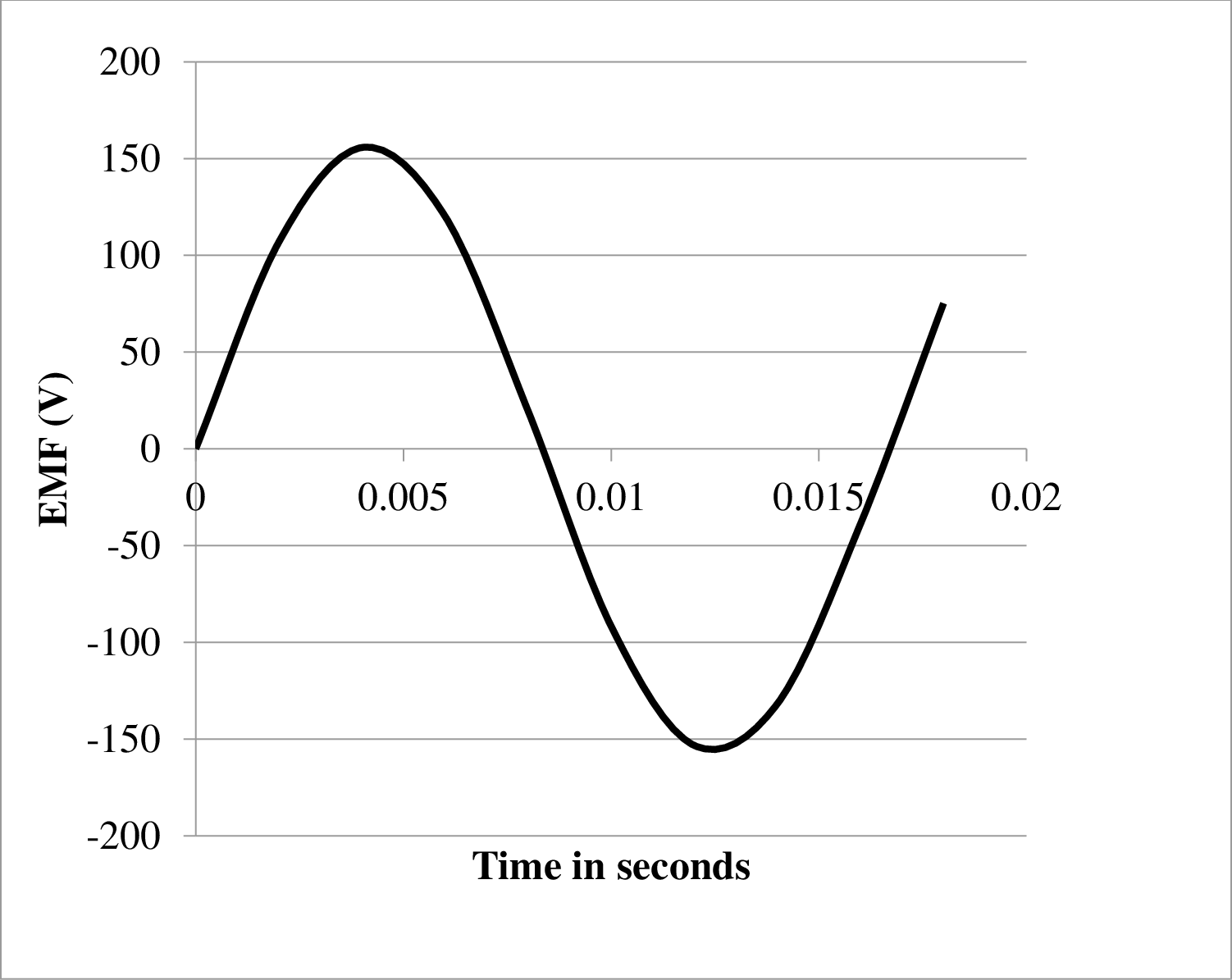
Plot for the induced emf in coil 2 is shown below.
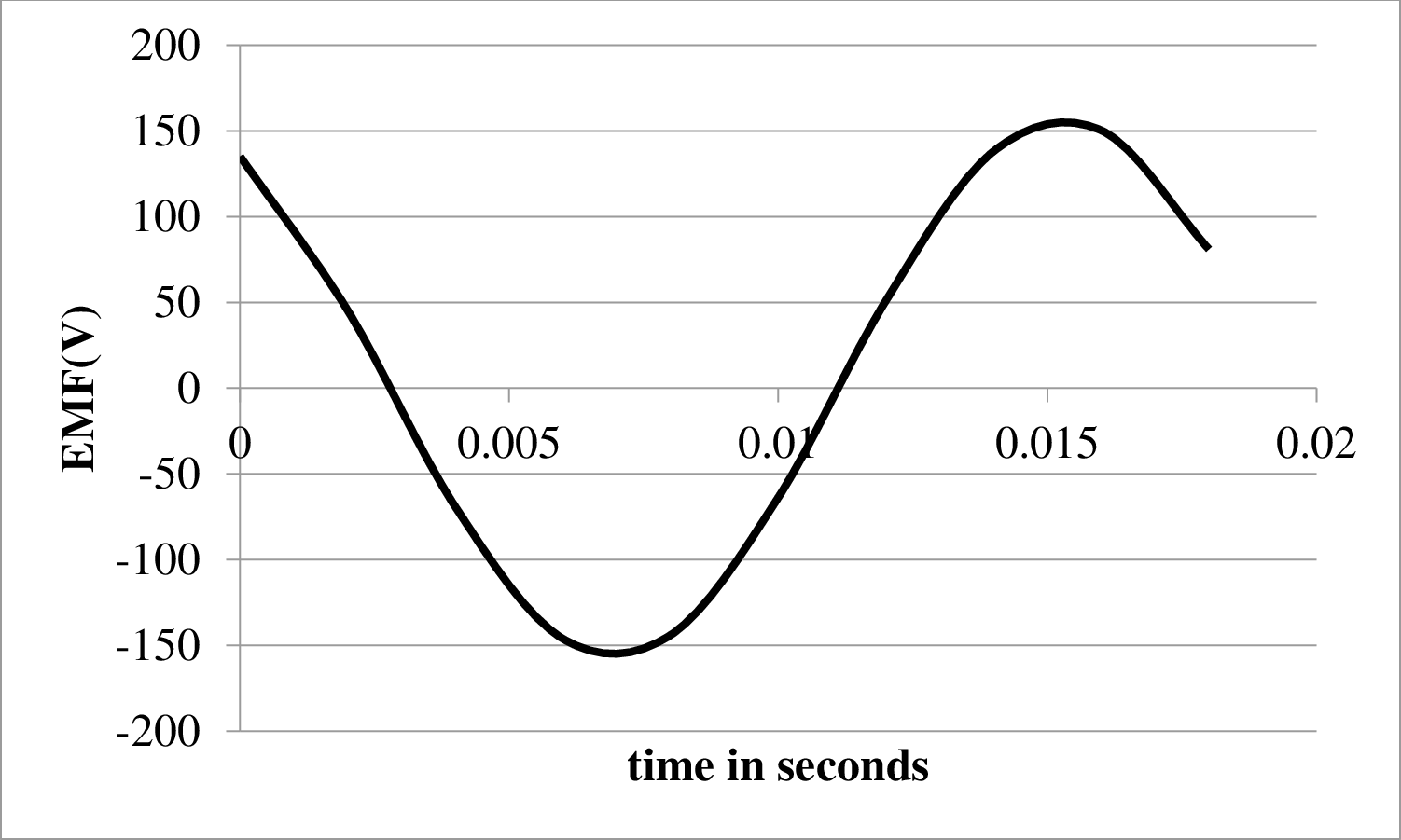
Plot for induced emf in coil
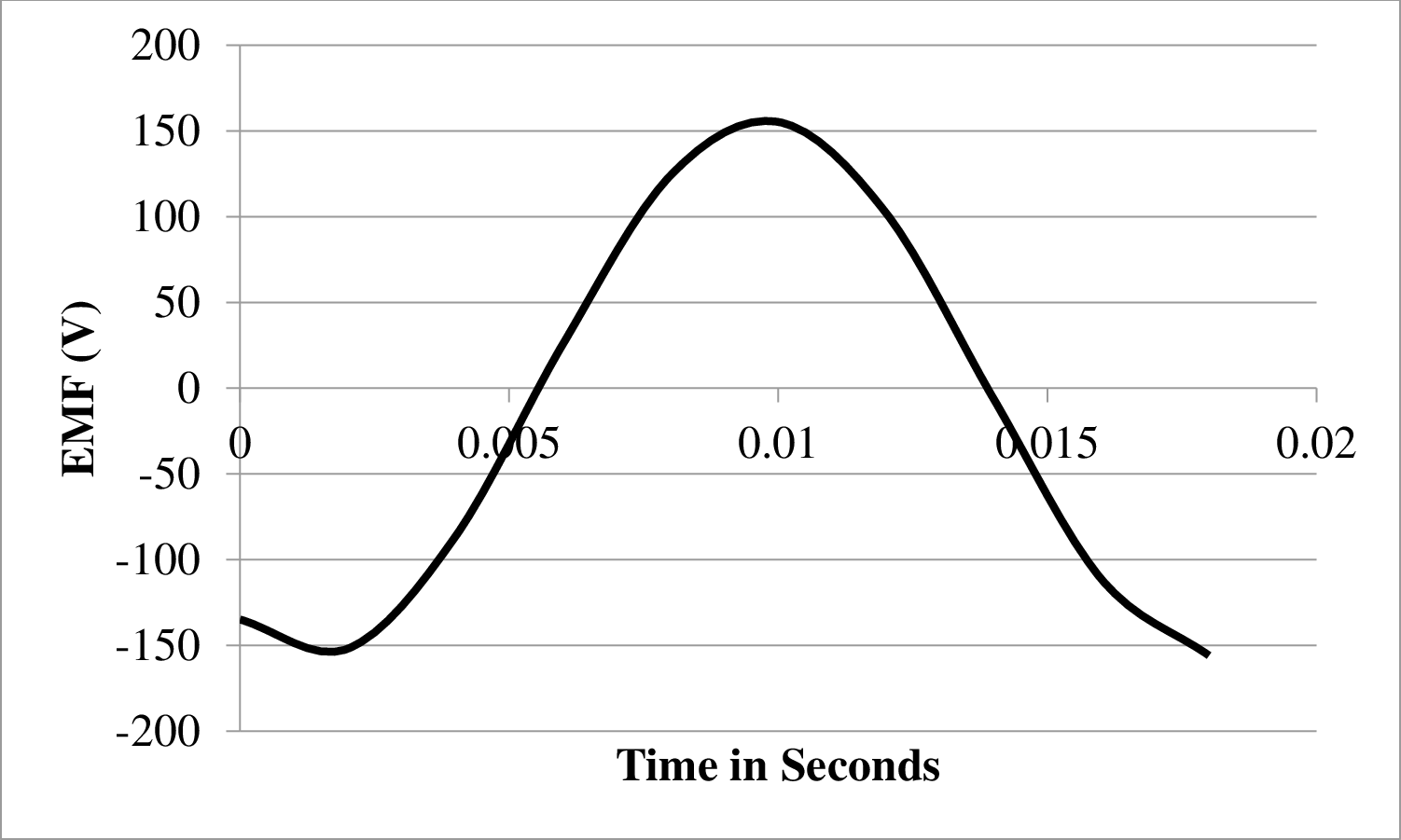
Explanation of Solution
As it is known that a three phase generator has
Therefore, a phase a difference of
Write the expression to calculate the induced emf in the coil.
Here,
Write the expression to calculate the peak value of emf.
Here,
Write the expression for the angular frequency.
Here,
Let the coil
Substitute
Write the Equation for the emf of coil
Convert degree in to radian
Write the expression for induced emf in coil
Substitute
Convert degree in to radian
Write the expression for induced emf in coil
Substitute
Calculate the peak emf
Substitute
Conclusion:
Calculate the angular frequency.
Substitute
Calculate the equation of emf for coil
Substitute
Calculate the equation of emf for coil
Substitute
Calculate the equation of emf for coil
Substitute
Draw the table to plot the graph at different time interval.
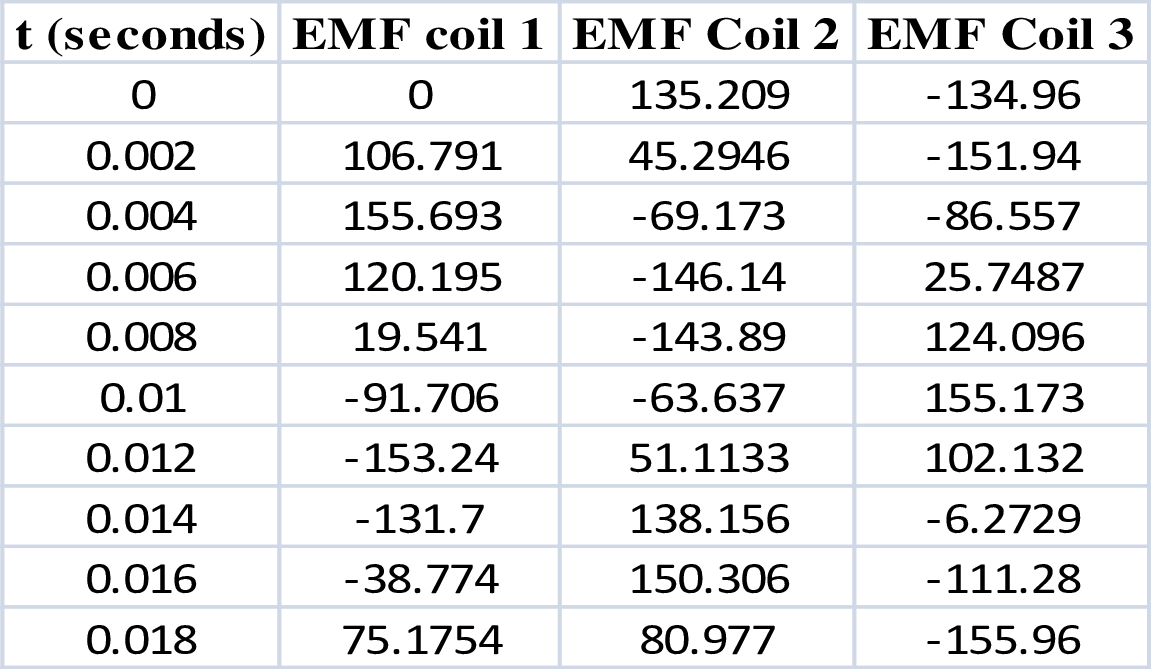
Plot for the induced emf in coil
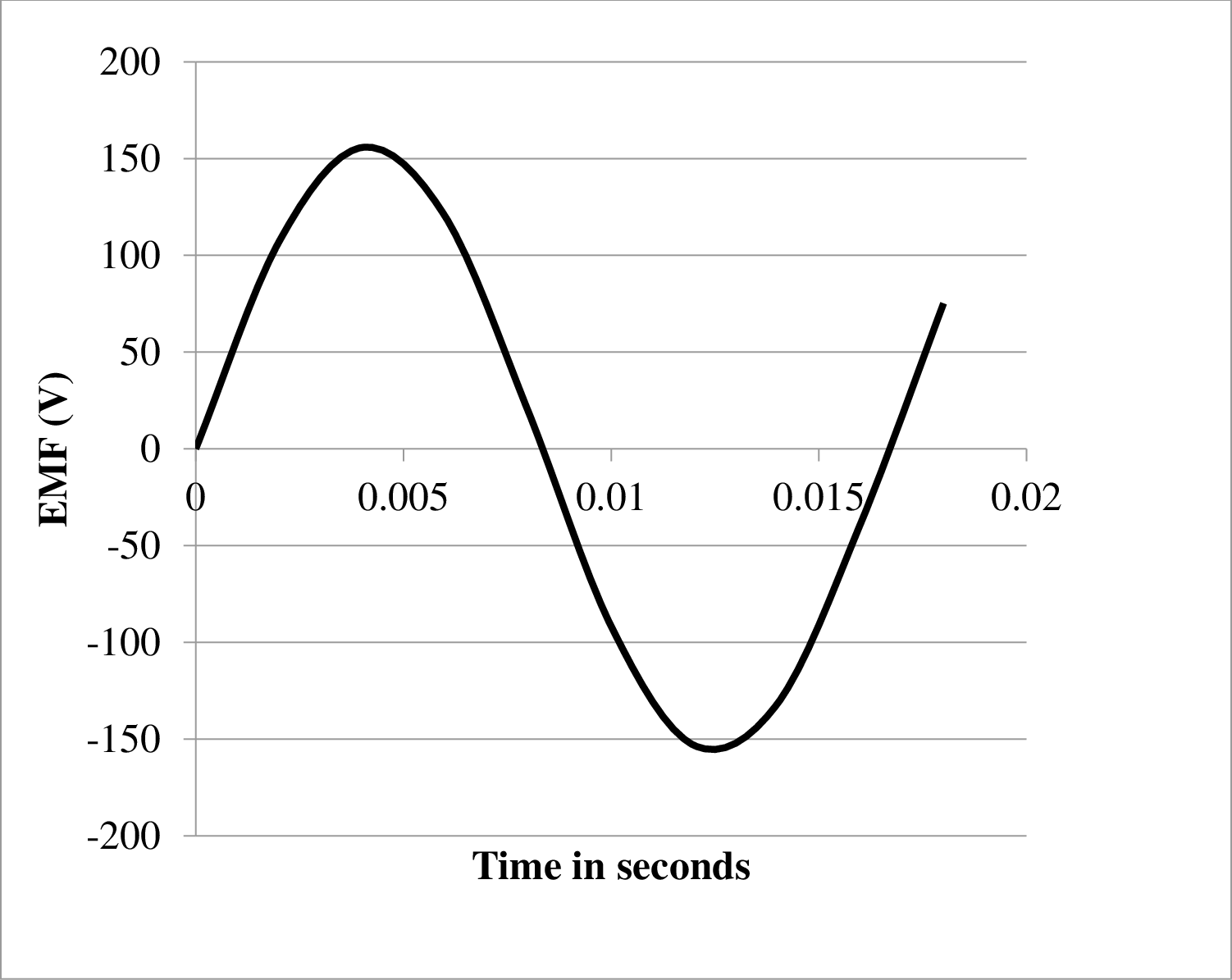
Plot for the induced emf in coil 2 is shown below.
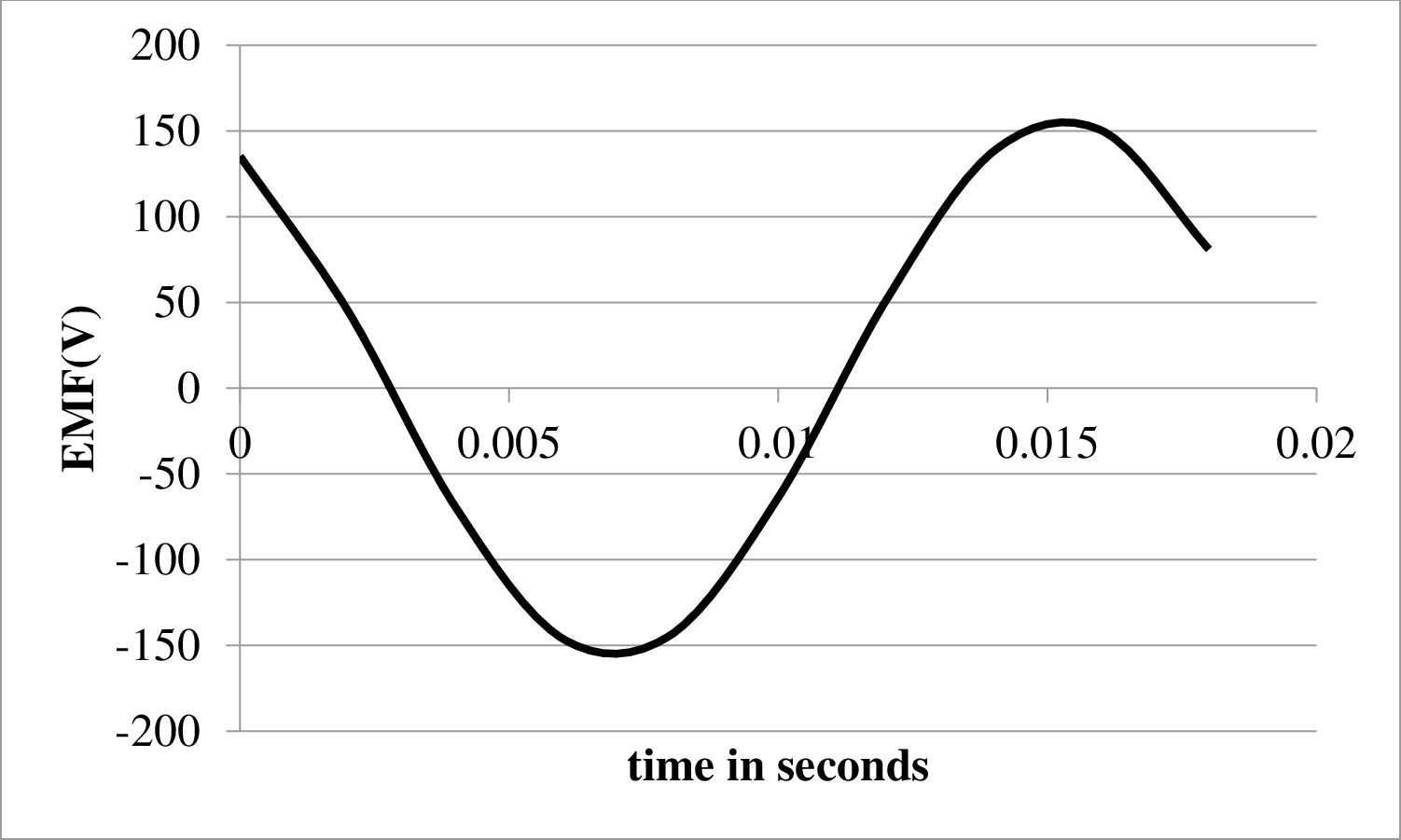
Plot for induced emf in coil
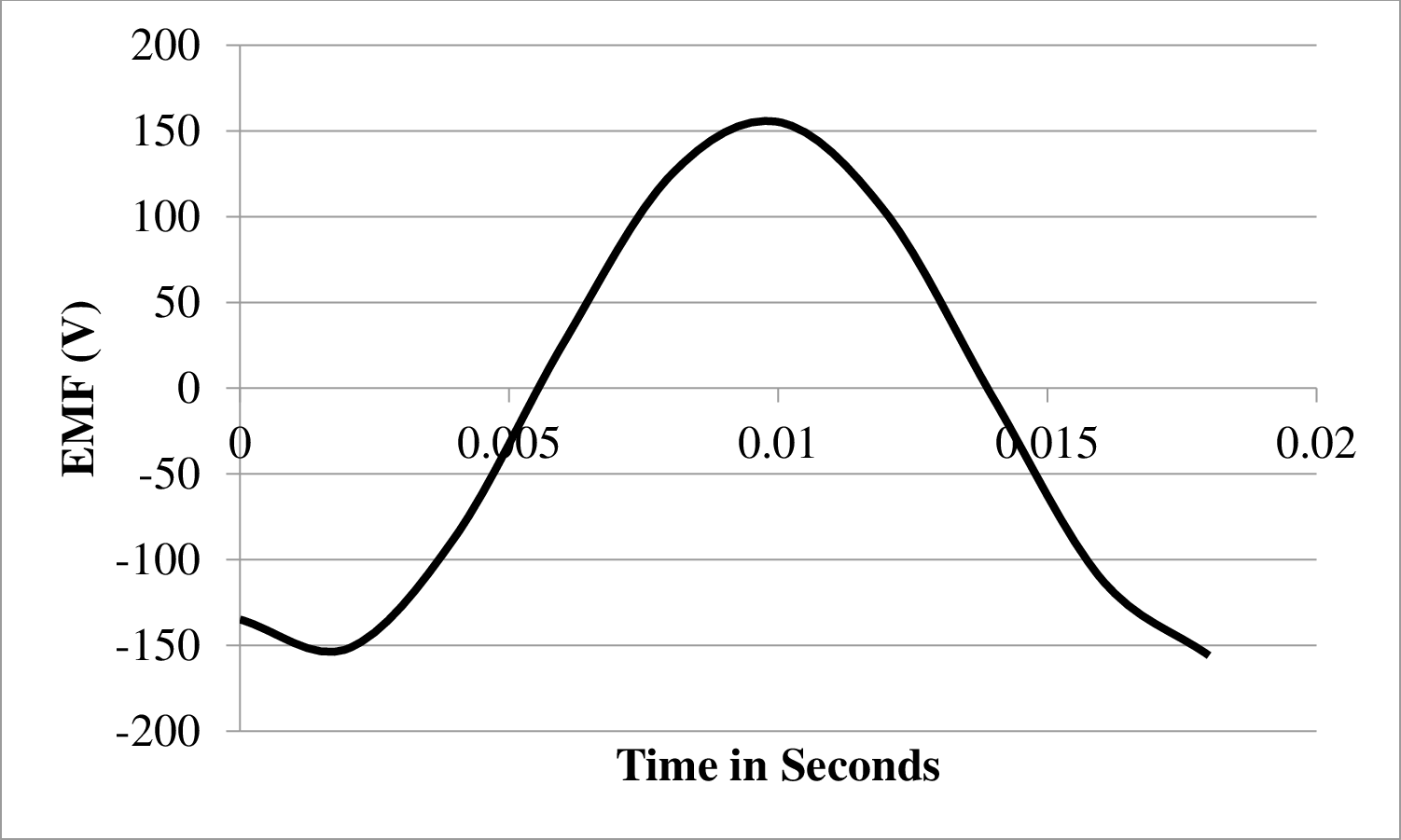
(b)
The ways in which a three phase generator is better than a one phase generator.
(b)
Answer to Problem 44PQ
The three phase generator has higher efficiency and higher power factor compared to a one phase generator which is its major advantage over one phase generator.
Explanation of Solution
The advantage of three phase generator over a one phase generator are as follows.
- 1. The power output of a three phase generator is constant whereas the power generated by a one phase generator is pulsating that it is not constant and behaves in an alternating manner.
- 2. The three phase generator has higher power factor as compared to one phase generator.
- 3. The three phase generator has much higher efficiency as compared to the one phase motor.
Want to see more full solutions like this?
Chapter 32 Solutions
Physics for Scientists and Engineers: Foundations and Connections
- (a) For a spherical capacitor with inner radius a and outer radius b, we have the following for the capacitance. ab C = k₂(b- a) 0.0695 m 0.145 m (8.99 × 10º N · m²/c²)( [0.145 m- 0.0695 m × 10-11 F = PF IIarrow_forwardA pendulum bob A (0.5 kg) is given an initialspeed of vA = 4 m/s when the chord ishorizontal. It then hits a stationary block B (1kg) which then slides to a maximum distanced before it stops. Determine the value of d.The coefficient of static friction between theblock and the plane is μk = 0.2. The coefficientof restitution between A and B is e = 0.8.Ans: d=1.0034 marrow_forwardFigure 29-43 Problem 12. ••13 In Fig. 29-44, point P₁ is at distance R = 13.1 cm on the perpendicular bisector of a straight wire of length L = 18.0 cm carrying current i = 58.2 mA. (Note that the wire is not long.) What is the magnitude of the magnetic field at P₁ due to i? P2° R R Larrow_forward
- Checkpoint 1 The figure shows the current i in a single-loop circuit with a battery B and a resistance R (and wires of neg- ligible resistance). (a) Should the emf arrow at B be drawn pointing leftward or rightward? At points a, B C R b, and c, rank (b) the magnitude of the current, (c) the electric potential, and (d) the electric potential energy of the charge carriers, greatest first.arrow_forwardPls help ASAParrow_forwardPls help asaparrow_forward
 Physics for Scientists and Engineers: Foundations...PhysicsISBN:9781133939146Author:Katz, Debora M.Publisher:Cengage Learning
Physics for Scientists and Engineers: Foundations...PhysicsISBN:9781133939146Author:Katz, Debora M.Publisher:Cengage Learning Principles of Physics: A Calculus-Based TextPhysicsISBN:9781133104261Author:Raymond A. Serway, John W. JewettPublisher:Cengage Learning
Principles of Physics: A Calculus-Based TextPhysicsISBN:9781133104261Author:Raymond A. Serway, John W. JewettPublisher:Cengage Learning College PhysicsPhysicsISBN:9781938168000Author:Paul Peter Urone, Roger HinrichsPublisher:OpenStax College
College PhysicsPhysicsISBN:9781938168000Author:Paul Peter Urone, Roger HinrichsPublisher:OpenStax College College PhysicsPhysicsISBN:9781285737027Author:Raymond A. Serway, Chris VuillePublisher:Cengage Learning
College PhysicsPhysicsISBN:9781285737027Author:Raymond A. Serway, Chris VuillePublisher:Cengage Learning College PhysicsPhysicsISBN:9781305952300Author:Raymond A. Serway, Chris VuillePublisher:Cengage Learning
College PhysicsPhysicsISBN:9781305952300Author:Raymond A. Serway, Chris VuillePublisher:Cengage Learning Physics for Scientists and EngineersPhysicsISBN:9781337553278Author:Raymond A. Serway, John W. JewettPublisher:Cengage Learning
Physics for Scientists and EngineersPhysicsISBN:9781337553278Author:Raymond A. Serway, John W. JewettPublisher:Cengage Learning





